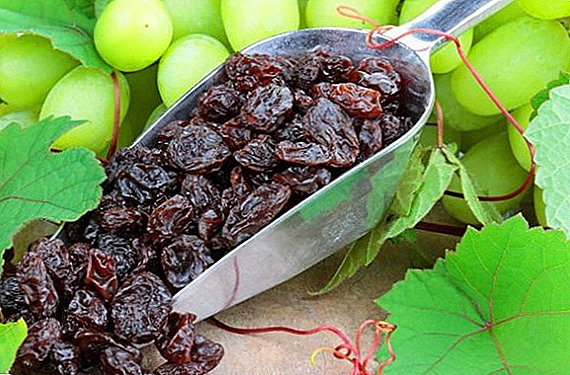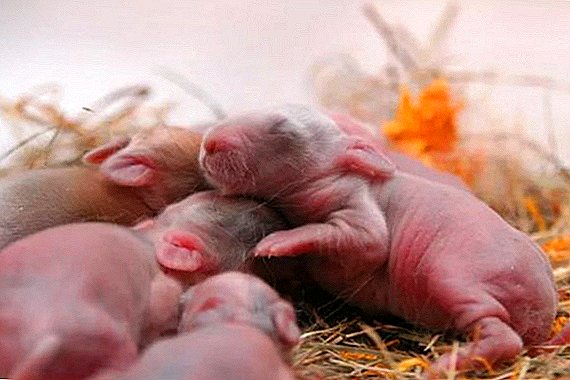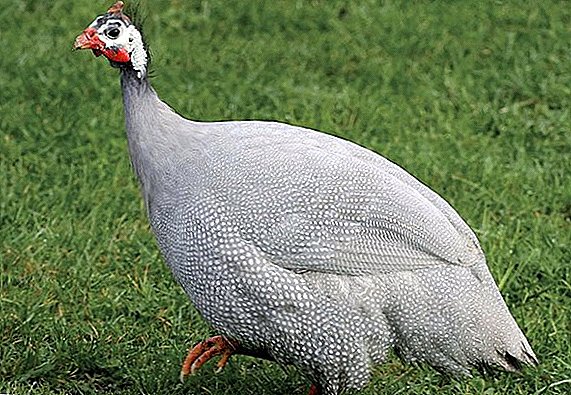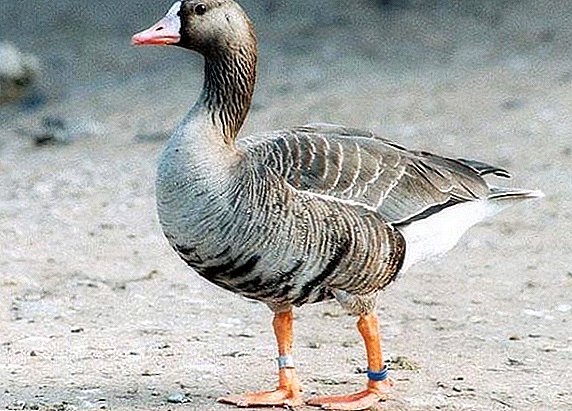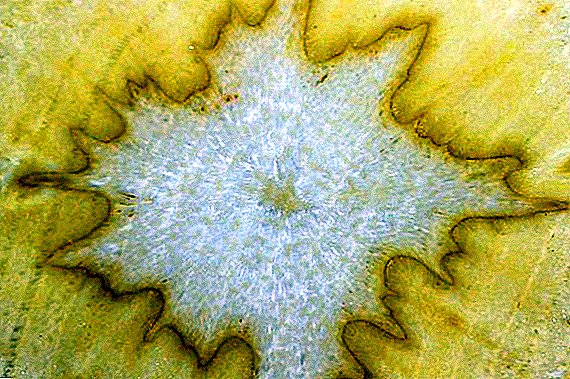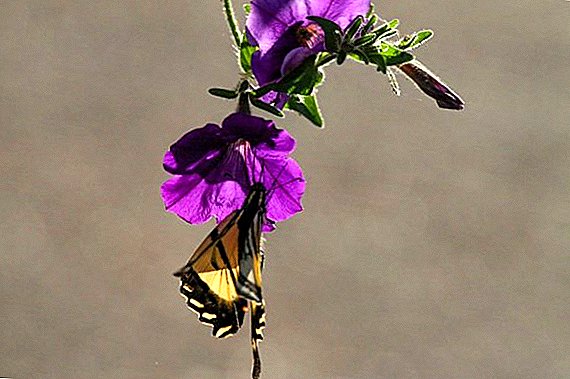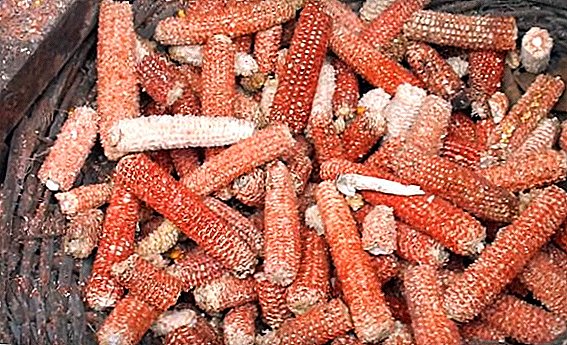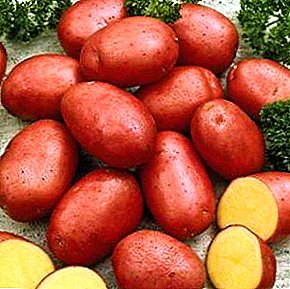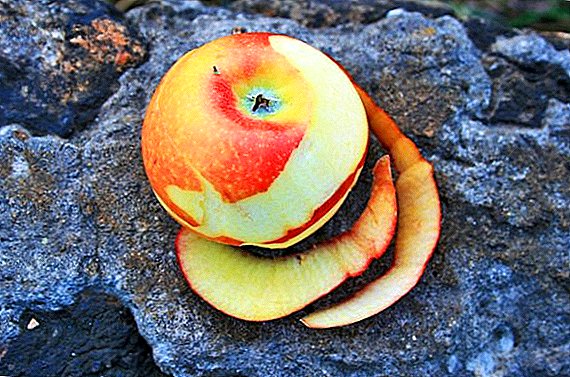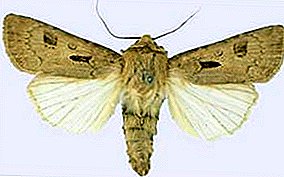
Scoops are dangerous and malicious enemy of any gardener, flower grower and gardener. They spoil the fruit, reducing the quality of the crop, destroy plants entirely. They can also be attributed to the pests of potatoes.
To effectively fight them, their features, external signs should be well studied, as well as methods of struggle.
Types of scoop
Gamma

She's a linen scoop, rich woman - gamma and metalworking - gamma. Name received for drawing in the form of the Latin letter gamma on the front pair of wings.
- What does it look like? Wings in scope reach 4 to 4.8 cm. The front wings are gray or brown with a purple or dark brown shade. They have a pattern in the form of double transverse stripes, as well as spots, outlined with a mother-of-pearl thin border. Hind wings monophonic, yellowish - gray. Along the edge is a clear brown stripe.
- Caterpillar. It has a thick torso up to 4 cm long. The color is grass-green, the back is decorated with longitudinal winding stripes of yellow color. On the green head there are black side spots.
- Baby doll. The integuments are dark brown, up to 2 cm long. Cremaster in the form of a flask, on the sides are a pair of large hooks, on the back - 4 small ones.
- Where is it found? Distribution - the European territory of Russia, Front and Central Asia, Western Europe, North America, Japan, North Africa, Indian Subcontinent, Afghanistan and China.
- Features of the form. The flight continues throughout the warm season, starting in April and ending in November. Activity decreases at temperatures below 18 °. One female produces between 600 and 1600 eggs per season. For the development of eggs and larvae requires high humidity, at least 80% for eggs and 90% for caterpillars.
Egg development lasts 4-8 days, the larvae lasts about a month. The caterpillar passes 4 molts and 5 generations. The next stage - the pupa lasts from 7 to 14 days. To pass the full development takes from 25 to 45 days.
- What eats? Scoop-gamma is a voracious polyphage. The larva eats ornamental plants, sugar beets, tobacco, hemp, mustard, flax, peanuts, sunflower, corn, essential oil, vegetables and legumes. The number of plants that a caterpillar can damage is more than 100 species.
- What harm does it do? The imago does not damage the plants, which is not the case with the larva. Caterpillars scoops-gamma are considered to be very harmful, since they very quickly eat all the available plants, after which they move to other areas, continuing their destructive activity. When moving from one field to another, the larvae simultaneously eat the leaves of bushes and trees.
Scoop gamma caterpillar photo below.

Caterpillars devour the leaves, gnawing through all the tissues. They bypass only the largest streaks. Unripe fruits, unopened buds and inflorescences of crops often suffer.
Winter

She's a winter night.
- What does it look like? Wingspan varies from 3 to 4.5 cm. The front have a non-ordinary gray or brown color with brown scales. Clearly drawn pattern of spots and stripes. Along the edge is a row of thick black shtrishkov. Males are lighter than females. The hind wings of the females are pale gray, along the edge there is a border of a darker shade, in males the color is pure white.
- Caterpillar. It can be up to 4 or 5 cm in length. The integuments are gray in color with a greenish tint and strong shine.
- Baby doll. 2 times smaller than the larva, its length is 1.5-2 cm. It is painted brown with red tint, there are two thorns on the cremaster.
- Features of the form. Active flight occurs in May, occurs at night. One female can produce from 400 to 2.3 thousand eggs. The caterpillar passes 5 molts and 6 generations. Young larvae of 1-2 instars leave for wintering.
- Where is it found? Habitat is extensive, covers Ukraine, most of Russia, including the Far East, Siberia and the Urals, Moldova, the Caucasus, Belarus, Africa, Central Asia, Japan, Western Europe, China, Nepal and Mongolia.
- What eats? First-generation larvae eat weeds, gnaw young seedlings, damage cotton seeds and corn.
- What harm does it do? Winter scoop is one of the most harmful caterpillars. One larva during the night is able to completely destroy about 12-14 cultivated plants.
Cereal ordinary

- What does it look like? A relatively large variety, with a wingspan of 3.6 to 4.2 cm. The front wings are variegated, painted gray and brown, decorated with yellowish spots and transverse winding stripes. Dark streaks are clearly pronounced. The rear wings are plain grayish-brown.
- Caterpillar. Can grow up to 3.5 cm in length. Color brownish-gray, on the back passes a light yellow strip.
- Baby doll. Length up to 2 cm, brick color.
- Features of the form. The female produces from 300 to 2000 eggs, laying them one by one on the ears and the inner side of the leaves. For the winter hiding larvae of recent ages.
- Where is it found? It inhabits North America, steppes and forest-steppes of Russia, Western Europe, Belarus, Japan, Ukraine, Central Asia, and Transcaucasia.
- What eats? Cereals, especially like corn, barley, wheat, oats, rye. It also damages some perennial herbs.
- What harm does it do? Caterpillars eat grain at any stage of development - young, mature and dried.
Gnawing
She exclamation. Gnawing scoop photos see below.

- What does it look like? Wingspan in the range from 3 to 4.5 cm. The front can be painted in gray, light brown or dark brown. Spots dark, almost black, form a pattern in the shape of an exclamation mark. Hind wings of female are brown, male is lighter.
- Caterpillar. The covers are opaque, painted in gray or brown with a yellowish tinge. The head and breast are orange. Torso length up to 5 cm.
- Baby doll. Size 1.5-1.7 cm, color yellow-brown, on the cremaster two spikes.
- Features of the form. Eggs are located on the ground, developing in 2 weeks. The larvae of the last generations lurk during the winter, in the spring they feed first, then pupate.
- Where is it found? Almost everywhere in Russia, Western Europe, Central Asia, the Middle East and Ukraine, in Kazakhstan, Mongolia, Kashmir, North Africa and Tibet.
- What eats? The caterpillar is a polyphagous polyphagous, eats vegetables, grains, industrial and ornamental crops. It feeds on sunflower, corn, winter wheat, potatoes, cotton, young shoots of woody plants.
- What harm does it do? Caterpillars of all generations cause serious damage to cultivated plants and cereals, significantly reduce the quantity and quality of the crop.
Hothouse
- What does a greenhouse scoop look like? The wings in expanded form reach 4 cm, the front ones are painted gray or almost white, and have distinct spots of different shapes. Hind wings monophonic, light gray.
- Caterpillar. The covers are dull, color gray with an earthy shade. In adult larvae, a dark longitudinal strip appears on the back.
- Baby doll. Brown, reddish tint.
- Features of the form. Very high fecundity - up to 3 thousand eggs from one female.
- Where is it found? Almost everywhere, lives in greenhouses, greenhouses and greenhouses.
- What eats? Omnivorous polyphage, can eat any plants found on the way.
- What harm does it do? The damage from the caterpillars is very serious, it damages not only the leaves, but also the fruits. Its activity dramatically reduces the amount of the crop.
Cotton
A very common dangerous pest. Cotton shovel photo below.

- What does it look like? Wingspan - up to 4 cm. Front painted in yellow-gray with green and pink tint. Spots and stripes are dark gray. The rear wings are light gray.
- Caterpillar. The color can vary from milky white, green, yellow to black. The body is covered with small spikes.
- Baby doll. Brick color, length up to 2.2 cm.
- Features of the form. Departure and subsequent flight are stretched, so different generations develop at the same time. Years of butterflies lasts from spring to November. The number of generations per season from 2 to 5.
- Where is it found? The area includes Asia, Australia, Africa, Europe, the islands of the Atlantic and Pacific.
- What eats? The diet includes over 350 species of plants around the world.
- What harm does a cotton scoop do? Caterpillars in the amount of 5 pieces can destroy 100 plants.
Asian cotton
Quarantine pest.
- What does it look like? The wings in scope reach 4 cm. The front wings are painted chestnut gray, covered with a pattern of strokes and stripes, which are folded into a figure 4. The rear wings are light gray, almost white, translucent.
- Caterpillar. It grows up to 4.5 cm. The body is brown, hairless, decorated with large black spots on the sides, and on the back with yellow and black stripes.
- Baby doll. Light chestnut, size 1.9 cm.
- Features of the form. Females place eggs on the inner side of the leaves, cover them with their abdominal scales. Young larvae live and feed in groups, spreading after the third molt. Caterpillars of the last generation go for wintering. During the season may appear 4-8 generations.
- Where is it found? In the tropics of the Pacific, Australia and India. In Europe, imported with various plants and containers. Able to live only in warm areas.
- What eats? Among food preferences there are ornamental, solanaceous, cereals and vegetable crops grown both in open ground and in greenhouses.
- What harm do they cause? The larvae eat the generative parts and leaves of plants.

The population can destroy up to 80% of the total crop.
Agrippina
Scoop of agrippina, it is agrippa and agrippina titania.
- What does it look like? The largest representative scoop, wings in scope reach 28 cm. The front and rear wings have a light beige or gray color and an intricate pattern, consisting of spots, winding lines and stripes. A characteristic feature of males is the blue-violet color of the inner side of the wings with a metallic sheen.
- Caterpillar. The body grows to 16-17 cm, the color is supposedly green, the integuments are decorated with black large spots and light side stripes.
- Features of the form. It is a rare, endangered species. Lifestyle is studied very little.
- Where is it found? In South and Central America.
- What eats? Monophagous, which eats bean shrubs cassia.
- What harm does it do? Caterpillar skeletons leaves.
Pine
Pine scoop photo see below.

- What does it look like? Wings in scope grow from 3 to 3.5 cm. The colors of the front wings are very changeable, can be red, white, red, gray, brown. The figure is represented by spots, stripes, winding lines. The rear wings are dark gray, decorated with a small dark spot.
- Caterpillar. The color of the skin changes as it grows from pale green and yellowish to dark green. On the back is a white wide line.
- Baby doll. The covers are brown and shiny. Length - up to 1.8 cm.
- Features of the form. The flight begins in March, the peak falls in the middle of spring. May end in May-June. Egg development continues up to 2 weeks.
- Where is it found? In any pine forests of Asia and Europe.
- What eats? Buds, needles and young shoots of pine.
- What harm does it do? Active eating the needles and gnawing cavities inside the trunk leads to the death of trees. Damaged plants begin to wither and dry.
Garden (garden) shovels
Garden trowels - the name includes several typeswhich cause serious harm directly to garden plants. These include cabbage, potato and tomato scoops. Garden scoop photo see below.

Cabbage
- What does it look like? A small night butterfly, the developed wings reach 4-5 cm. The front ones are covered with dark transverse stripes, themselves are painted in dark brown color, the spot is white. The rear wings are plain gray.
- Caterpillar. Changes color as it grows - from greenish-gray to dark chestnut. On the sides there are light yellow stripes, on the back are many spots.
- Baby doll. Chestnut-red, about 2 cm long.
- Features of the form. Second-generation pupae are sent for wintering. All stages of development prefer to stay in conditions of high humidity. Most often live near water. During periods of drought, the caterpillars die.
- Where is it found? The Baltic countries, Central Asia, Russia, North America, Ukraine, Transcaucasia, Europe, Belarus.
- What eats? Mostly hare and cruciferous plants, but can eat most other crops, including vegetables, cereals and ornamental.
- What harm does it do? Caterpillars eat away moves in the heads of cabbage and other fruits.
Images on the topic: "Cabbage scoop photo" are present in the global network in large quantities. What does a caterpillar look like Cabbage see below.

Potato
She marsh and spring lilac.
- What does it look like? A small butterfly night. The front wings are gray with a reddish, brown or yellow tinge. They are covered with clear spots and stripes. The rear is yellowish gray or pinkish.
- Caterpillar. Faded gray with mauve or purple tint, matt covers.
- Baby doll. Standard size, brown-red color.
- Features of the form. Wintering eggs remain, the development of which occurs in the early spring. The caterpillar feeding begins in April and May and lasts until the end of July.
- Where is it found? Throughout Europe, including Russia and the CIS countries, in Central Asia, China, and Kazakhstan.
- What eats? Different herbs, corn, potatoes, strawberries, rhubarb, raspberries, onions, tomatoes and ornamental plants.
- What harm does a scoop potato? The caterpillars eat the leaves, crawl inside the thick stems and gnaw the inner contents. Stems begin to dry out or rot.
As the fruits appear, the larvae begin to feed on them, greatly deteriorating the harvest.
Potato scoop photo below.

Tomato
She Karadrina, little scoop, ground and cotton leaf worm.
- What does it look like? The wingspan does not exceed 2,5 cm. Back white with a slight pink tinge.
- Caterpillar. Color chestnut or green. Torso length up to 3 cm. On the back are longitudinal strips of hair, on the sides a dark stripe is superimposed on the yellow one.
- Baby doll. In length - up to 1.4 cm. The integuments shine, have a yellowish-brown color. On cremastere 4 spikes of different sizes.
- Features of the form. The species has many development cycles. In the northern zones - 2-3, in the southern - up to 10. The female masks with eggs with gray hairs. Pupae remain for wintering.
- Where is it found? In the Baltics, Transcaucasia, Russia, Moldova, America, Asia, Southern Europe, Africa, and Ukraine.
- What eats? The diet is very extensive, consists of 180 types of crops. The favorites are malvaceae, legumes, mirage, solanaceous and bluegrass families.
- What harm does it do? Caterpillars eat leaves, flower buds, buds and inflorescences, which significantly reduces the yield of plants.
Scoop tomato photo below.

Conclusion
Scoops form the most extensive family order of the Lepidoptera. Their representatives can be found almost everywhere, except for the coldest areas.
A nocturnal lifestyle not only butterflies, but their caterpillars, complicates the timely detection of pests. But most of them are quite a serious threat to plants.
Useful video!


